November 25, 2017 9:00 pm
SPOILERS: Star Trek Discovery’s “Spore Drive” is Nonsense (and Other Musings on Sci-Fi Travel Technology).
Today’s guest blog post is by StarTalk intern Kirk Long. Kirk is majoring in astrophysics while minoring in applied mathematics and piano at Boise State University. He spends his summer weekends working at the largest public observatory in Idaho, the Bruneau Sand Dunes State Park Observatory, where he gives educational astronomy presentations and operates various large telescopes for the public. Kirk also helps run the StarTalk Snapchat (startalk-radio).
With Star Trek: Discovery hitting its mid-season finale recently, I figured it was appropriate to write this post up without spoiling the plot for too many people — but that being said, if you haven’t watched the show yet and don’t want to know about the titular ship’s new mode of transportation, stop reading now. Also, just as a disclaimer, aside from the controversy surrounding locking Discovery behind CBS’s paywall, I have been overall enjoying the show. The characters are compelling, the acting good, the special effects are stunning, and the set design is beautiful. Even if some of Discovery’s choices might cause loyal Trek fans to raise an eyebrow and ask some continuity questions (such as why the Federation apparently abandoned hologram technology) overall I can look past most of those things. But there’s one thing that still nags at me every time I watch — why in Kirk’s name does the ship have to travel across the universe using a fungal network?

Discovery’s protagonist Michael Burnham screaming something along the lines of “Khannn!” in frustration at the idiocy of the spore drive. Credit: CBS.
In the third episode of the show (after what may be the greatest pilot of any Trek series ever — whatever you think of Discovery you can’t deny that the “Battle at the Binary Stars” was awesome) we are finally introduced to the USS Discovery and the secrets she carries, including a fancy new way to travel the universe — called the “spore drive.” As resident “astromycologist” (does that not sound a little ridiculous to anyone else?) Lt. Stamets (played wonderfully by Anthony Rapp) explains that really “biology is physics” and somehow that enables magic fungi to transport us across the universe. Stamets is right (technically), that everything is physics if you look deep enough (and one might argue mathematics is even deeper), but that doesn’t mean his newfound spore biology will stop following the laws of physics, which currently do not even come close to entertaining starship transport via fungus. Whatever.
Anyways, this new technology allows Discovery to disappear and reappear instantaneously anywhere in the known universe (and potentially other universes), making the ship an enormous tactical asset in the war against the Klingons. There are several obvious problems I see with Discovery’s “spore drive”, but most of them I can look past for the sake of the narrative of the show. First off, setting the absurdity of the technology aside, why would Starfleet only give it to two ships (a sister ship to Discovery is destroyed early in the first season) and why would it be so difficult to replicate anywhere else? Second, given this new technology, you seriously think the powers that be in the galaxy would just abandon it (and never even mention it) in any other series? More importantly, why in the universe does using the drive require something living to interface with it? In an attempt to pander to what’s trendy in science, the crew originally uses a giant space tardigrade (eliciting a huge eyeroll from yours truly) — poking it with these pleasant looking needles every time they need to jump. When it becomes clear that this is actually not great for our friendly neighborhood mushroom space bear, Lt. Stamets takes it upon himself to change his genetic makeup — giving himself some tardigrade DNA so that he can interface with the system. Aside from whether its biologically plausible for him to do this, why does tardigrade DNA allow you to interface with the space mushrooms? The human brain has vast processing power and can store an immense amount of information, but I don’t buy that in the 23rd century a state-of-the-art starship isn’t equipped with a supercomputer more capable than a single human/tardigrade brain. It’s never explained, and I still don’t buy it.
It does lead to some interesting ethical questions and quandaries for Stamets, however, and even though it may seem like I’m attacking him here I actually enjoy his character as a whole —seeing the chief engineer (an openly gay male) on a starship openly profess his love for (and kiss) the ship’s chief medical officer (another openly gay male in a relatively healthy relationship with Stamets) as just another normal relationship, is entirely in keeping with Star Trek’s vision of the future. Finally, if you were going to make a new kind of drive, so be it — but why does it have to be something as stupid as (sorry, real-life mycologists) space mushrooms? Why not say the ship has figured out a way to travel the dark matter filaments linking the universe together? I’d still probably scoff a little bit, but it would at least be based on something real. Space mushrooms and giant alternate reality space tardigrades just aren’t doing it for me. Oh, and one other thing about the spore drive — why does the Discovery have to do a roll every time the drive is activated? I mean okay, it looks cool (this gripe is maybe grasping a bit) but it seems a flagrant abuse of the ship’s inertial dampeners.
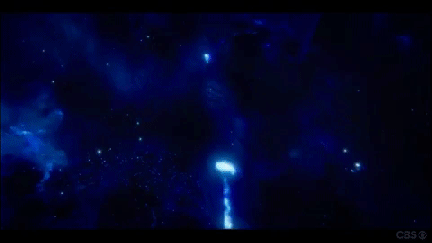
Here’s that aforementioned Discovery roll, or is it more of a cartwheel? I’ve also noticed that the saucer appears to rotate for no apparent reason before and after a spore drive jump. Credit: CBS.
The largest problem with the spore drive is that it’s just pandering technobabble, and it’s totally unnecessary. A war with the Klingons would have been an interesting enough topic for the show to delve into, and it would have still been a unique and different tone for a Star Trek series. For all of the continuity problems the new technology presents, you would think it would be worth it, right? And that’s what gets me — I just don’t see how it is. I’m not one of those old, angry, and upset grandpa style Star Trek fans — I appreciate the old shows and movies, but have also enjoyed the new iterations (lens flare and all). Discovery changes a lot about Trek, and offers a perspective into that universe not seen before — so why couldn’t that be enough?
I figured that this rant alone wouldn’t be substantive enough to warrant its own post, so below I’ve outlined some other common modes of transport seen in sci-fi series, as well as how absurd I view each.
1: Warp Drive (as most commonly seen in Star Trek)
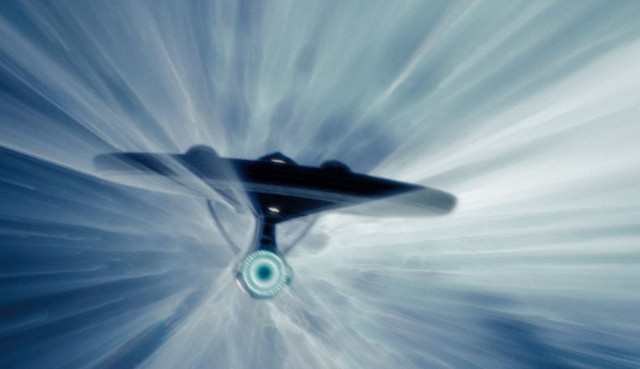
J.J. Abram’s Enterprise warping into what’s sure to be a lens flare ridden engagement. Credit: Paramount Pictures.
The original Star Trek introduced us to “warp” drive — and didn’t really try to explain it (a good call on their end). I have very few problems with warp drive. First, it’s actually technically possible (probably), and although it may never become a reality for our species it doesn’t feel like too big a stretch for me, and it’s certainly nowhere near the absurdity of Discovery’s new drive. If you’re interested in reading more about how real-life warp drive might someday work, check this out.
2: Wormholes (most commonly seen on Stargate)
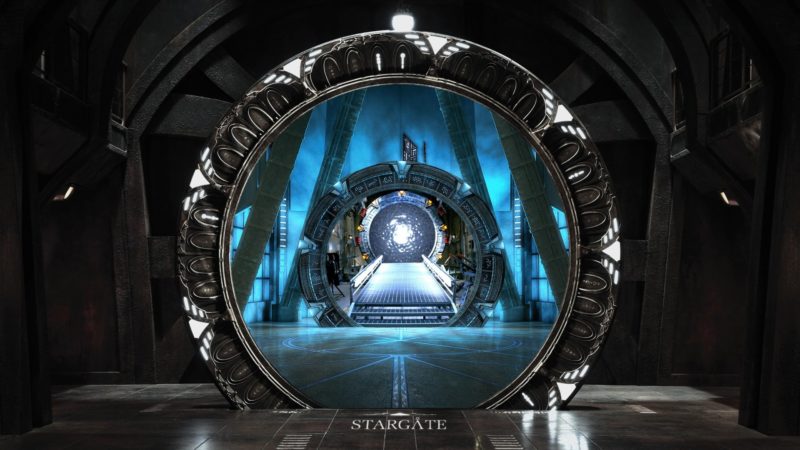
The three “models” of Stargate, from Universe, Atlantis, and SG-1, respectively. Credit: MGM.
Another reason I think I’m so upset with Discovery’s spore drive is that the show actually takes itself pretty seriously, delving into some pretty heavy stuff. The spore drive sticks out as flamboyantly cartoonish in the face of the serious drama in the conflict between the Klingons and the Federation. Stargate never had that problem. Although the show did explore some heavy topics as well, and it had nice narrative arcs for the audience to follow, it was always a little bit campy yet also cognizant of that fact — and thus never took itself too seriously. Wormholes are theoretically allowed by our current understanding of physics but we’ve yet to discover one naturally occurring in the universe, and we are certainly a long ways from ever understanding how to create a stable artificial wormhole on Earth. Even if we could, it’s incredibly unlikely you’d ever be able to send something like a person through and have it reappear on the other side intact. Warp drive is more plausible to me than a wormhole, but both are still lightyears ahead of the spore drive.
3: The Epstein Drive (The Expanse)
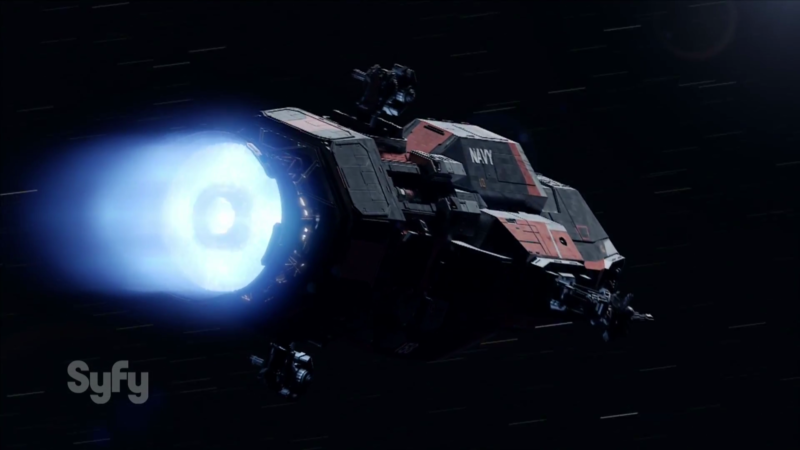
The Rocinante burning her Epstein drive. Credit: SyFy.
This is perhaps the most plausible possibility on this list, as The Expanse is set in a closer future where humanity has only colonized the solar system. Even still, the solar system is a big place, and with our current technology it takes years to reach the outer planets, making any colonization efforts of anything farther away than the moon or Mars unlikely to succeed. The Epstein drive was invented by Expanse author James S. A. Corey, and it is essentially a fusion rocket that allows the ship to maintain a constant acceleration/deceleration throughout its voyage. The main problem with conventional propellants is that once you burn through it all you can no longer change your velocity without resorting to crafty maneuvers like a gravity assist, but a fusion drive would change that. The Apollo rockets burned up all their fuel in about 17 minutes, and although they reached a tremendous speed it still took more than three days to reach the lunar surface — meaning the rockets burned for less than a percent of the total travel time. Imagine if we had a propellant that allowed us to burn continuously for even a few percent of the total trip duration and how much time that would save, and you can begin to see the appeal of the Epstein drive. We haven’t figured it out just yet, but it’s certainly plausible for us to see future rockets powered by something like we’ve seen in The Expanse.
4: Hyperspace/Lightspeed/Slipspace/Subspace/FTL (This pretty much encompasses the rest of them, right?)
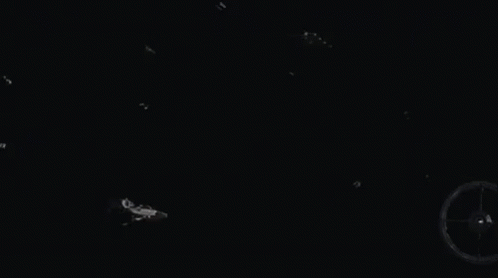
Galactica rejoins the fleet from an FTL jump. Credit: SyFy.
This is actually my favorite “technology” utilized in popular science fiction, even though it’s probably the least realistic (excluding the spore drive). The reality is that space is really, “vastly, mind-bogglingly big”, and to explore it on a human timescale you have to break a few rules. Most sci-fi shows recognize this, and although some try to explain their way out of things with technobabble and fungal networks others just say, “hey look, our ship goes faster than the speed of light and we don’t spend that much time talking about it.” The show that I think does this best is Ron Moore’s reimagined version of Battlestar Galactica. The show doesn’t even have a name for their drive, simply calling it “FTL” (meaning faster-than-light). There’s no fancy, over-the-top animations for when the ships are “jumping”, they just simply wink out of existence at one location and reappear in another. Best of all, it’s never really explained how they got the technology or how it works (I think we actually see Galactica’s engine room only once or twice in the entire series). It’s needed as a plot device, and the writers use it for just that. Likewise Galactica does a great job about never talking about how all of the ships have artificial gravity. Constraints on actors and budgets mean that it’s pretty hard to make a show shot in zero-g (or something that looks like it) and yet despite nearly all of the ships having an Earth-like gravity in the show I can’t recall a single instance where it was technobabbled about or even really discussed — and I think it’s better that way. In our current understanding of how the universe works, things like artificial gravity and faster than light travels are pretty much just fantasies, and sometimes it can be best simply to acknowledge their necessity for the narrative but not try to explain them rationally – because they really aren’t that rational, especially when they’re a frakking fungus.
Did we miss anything? Do you agree with my thoughts on Discovery, or am I just being a grumpy grandpa?
Get the most out of StarTalk!
Ad-Free Audio Downloads
Priority Cosmic Queries
Patreon Exclusive AMAs
Signed Books from Neil
Live Streams with Neil
Learn the Meaning of Life
...and much more

 Become a Patron
Become a Patron

